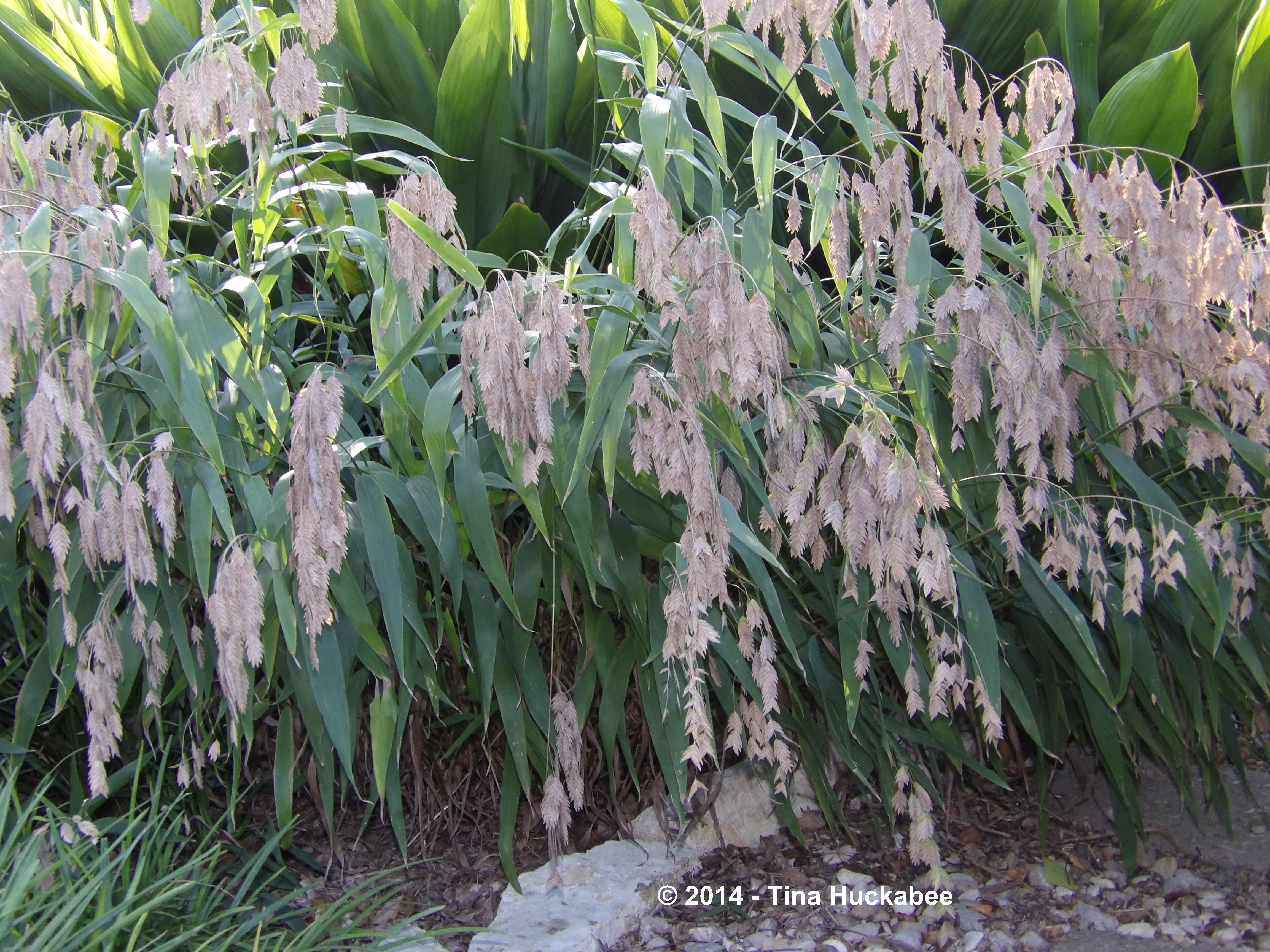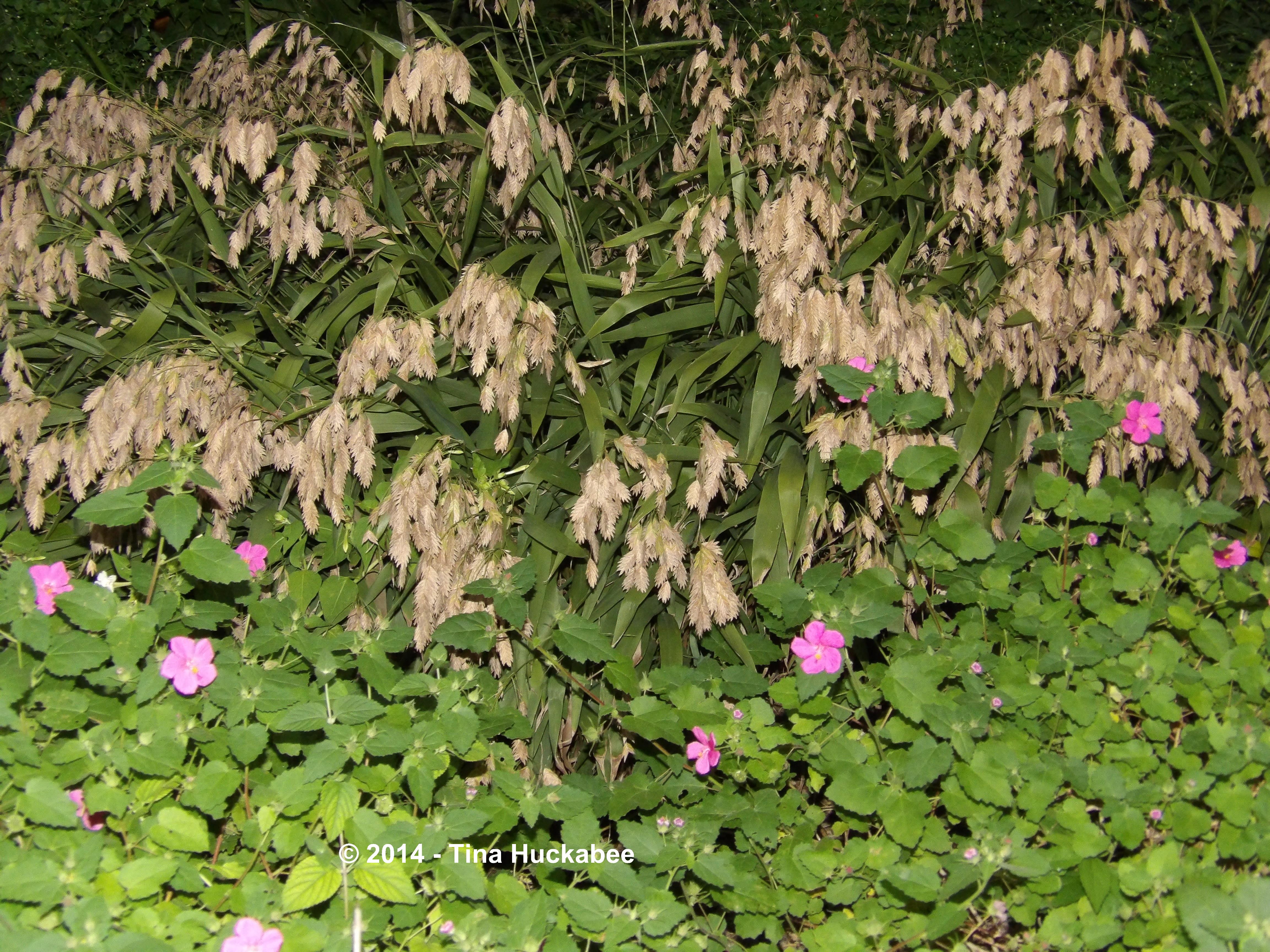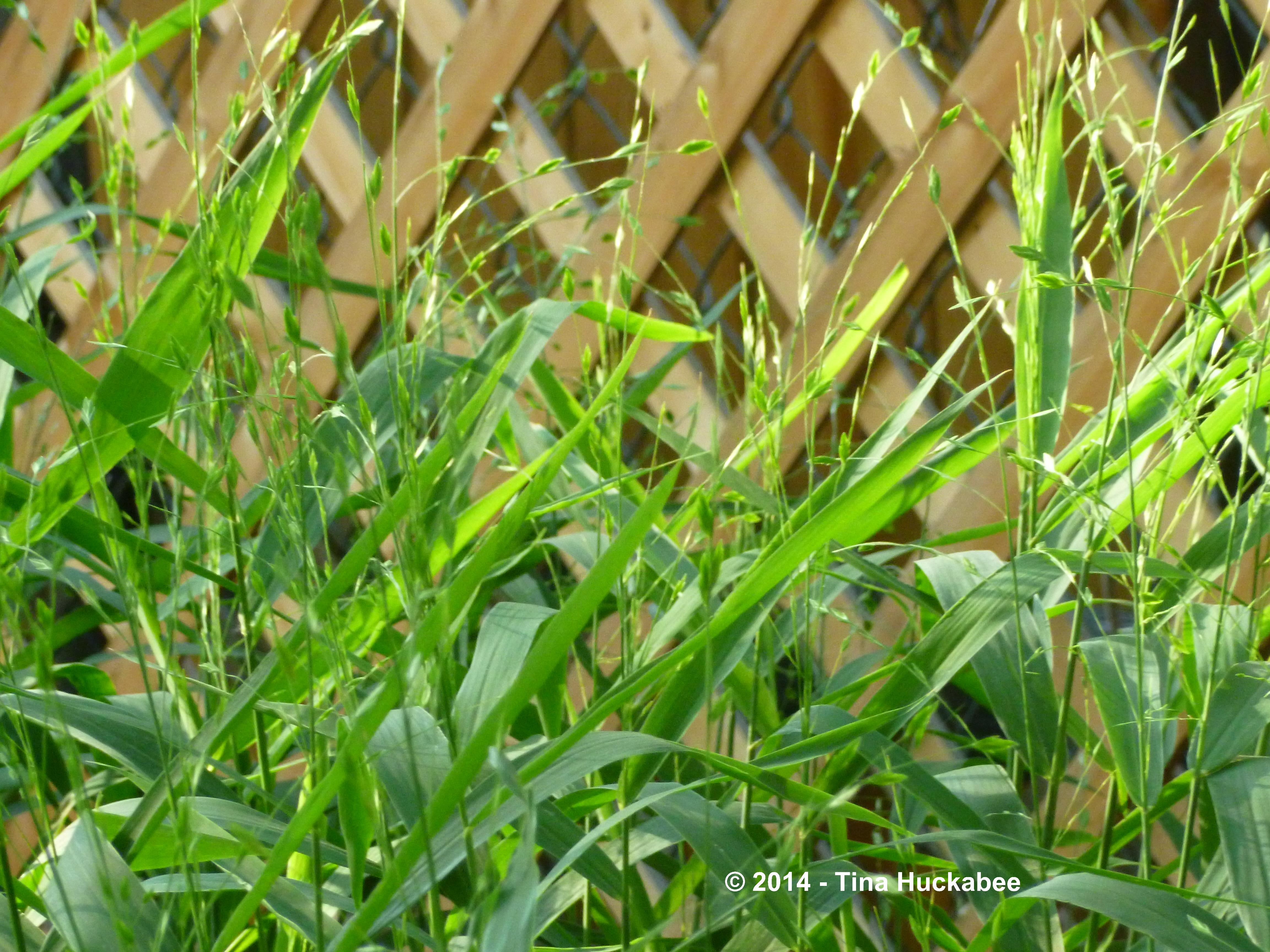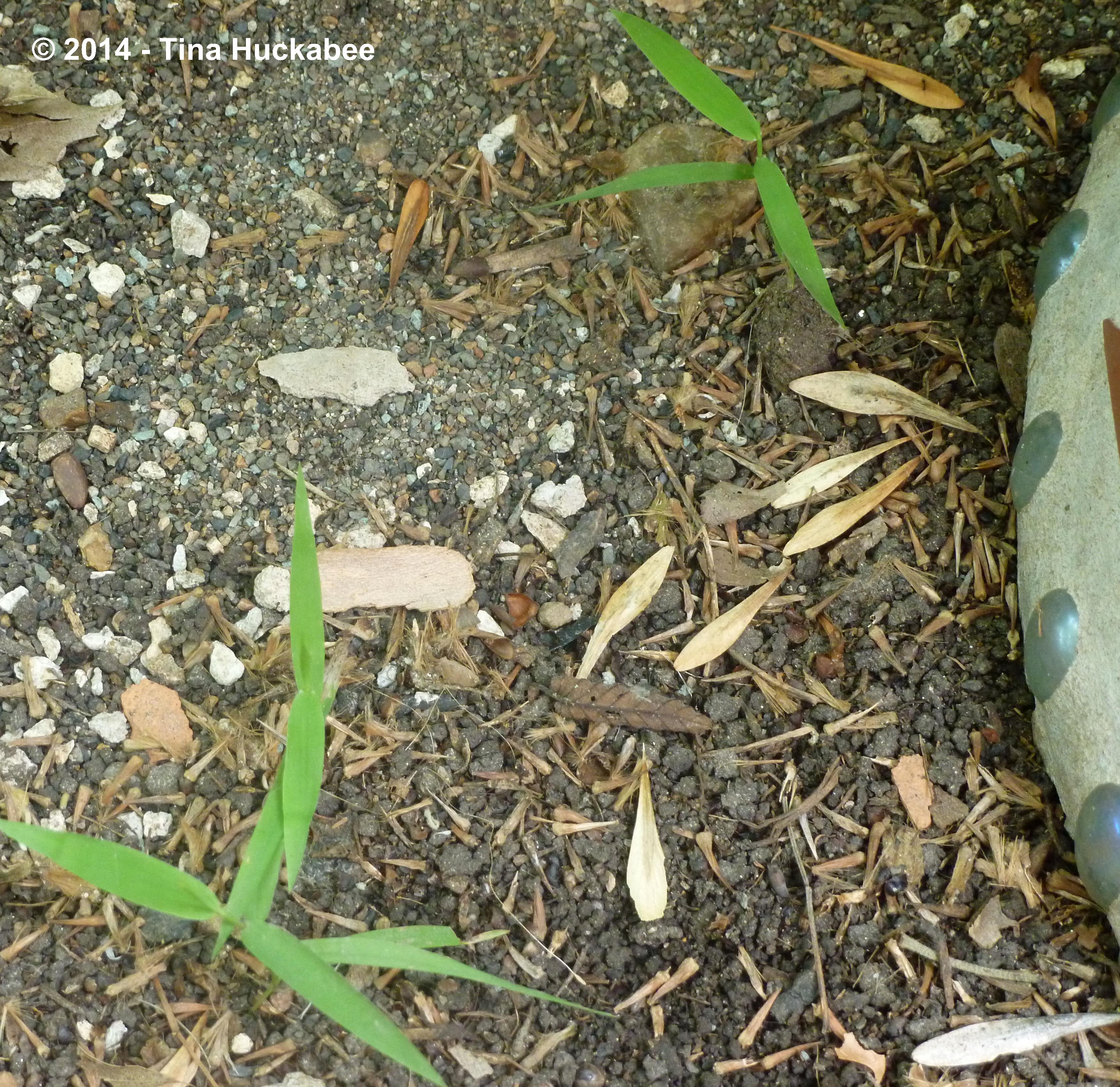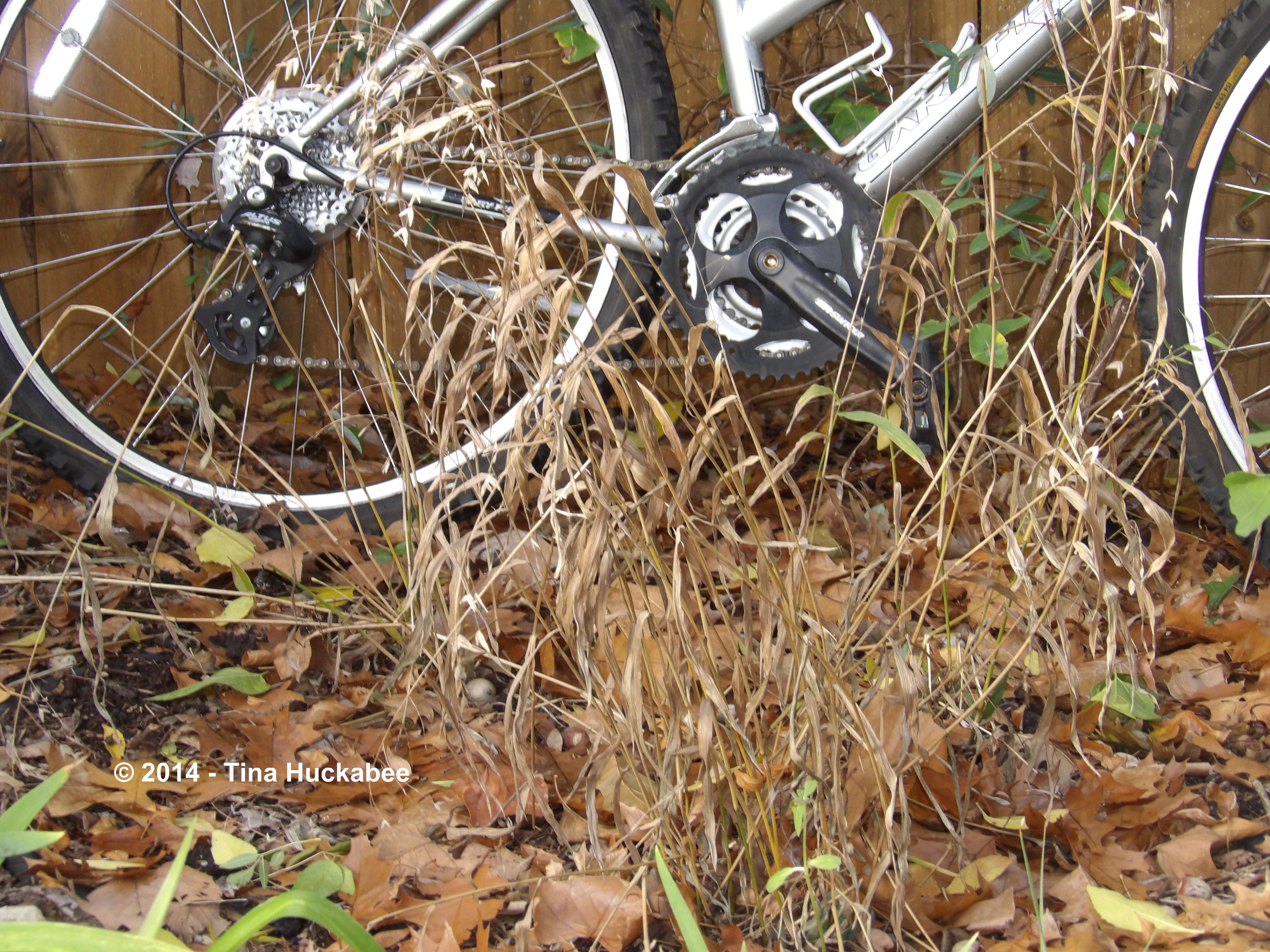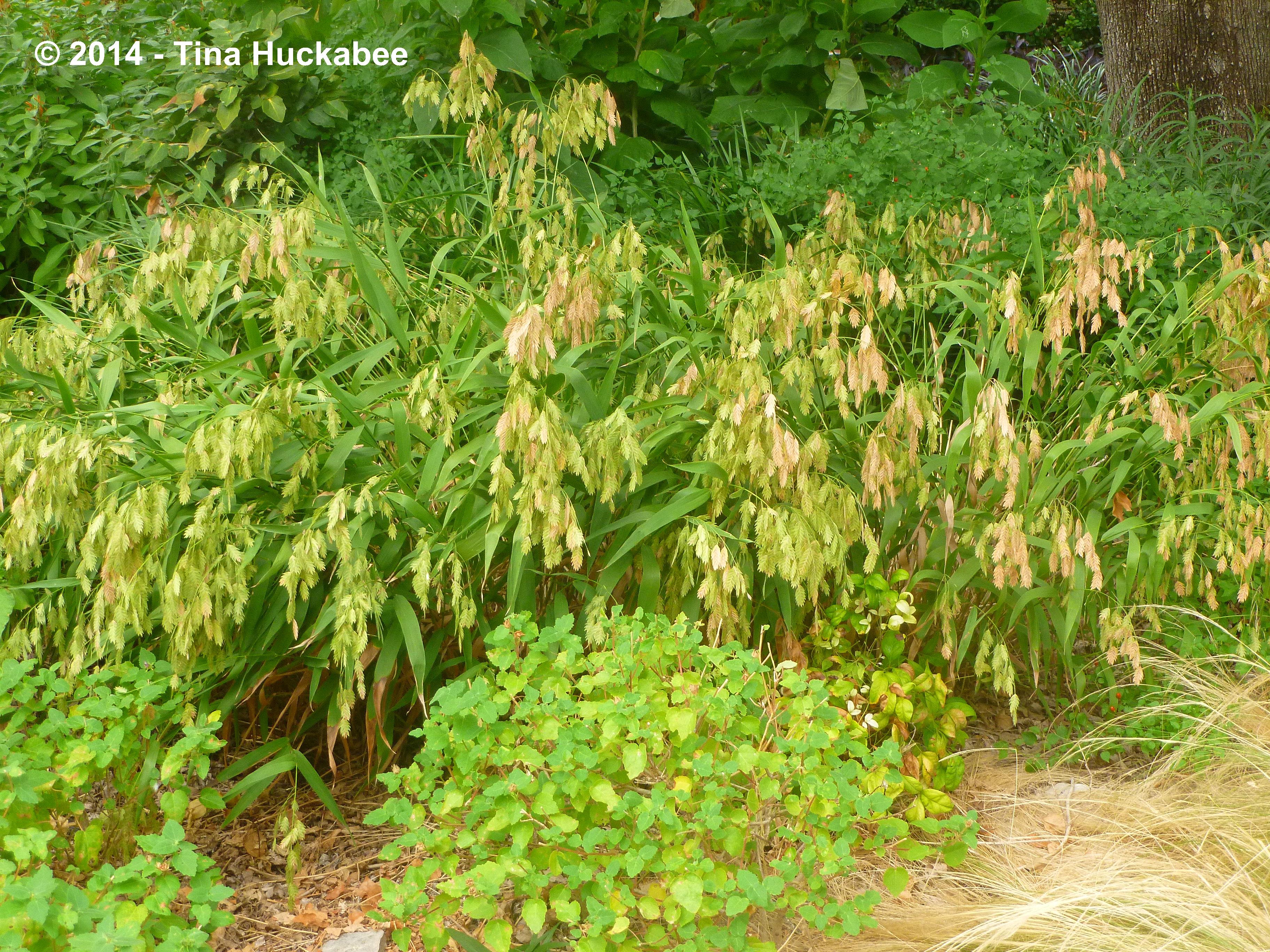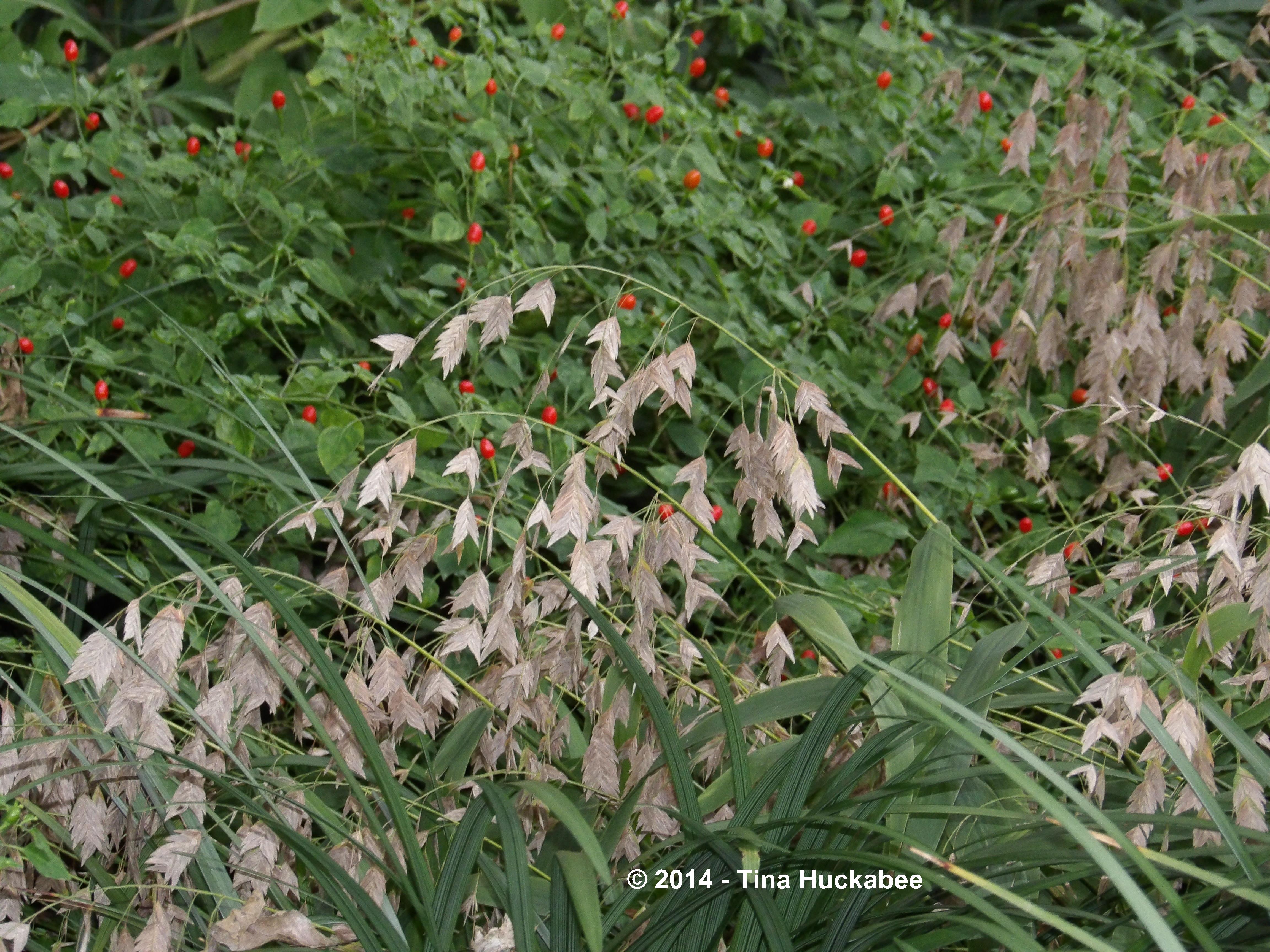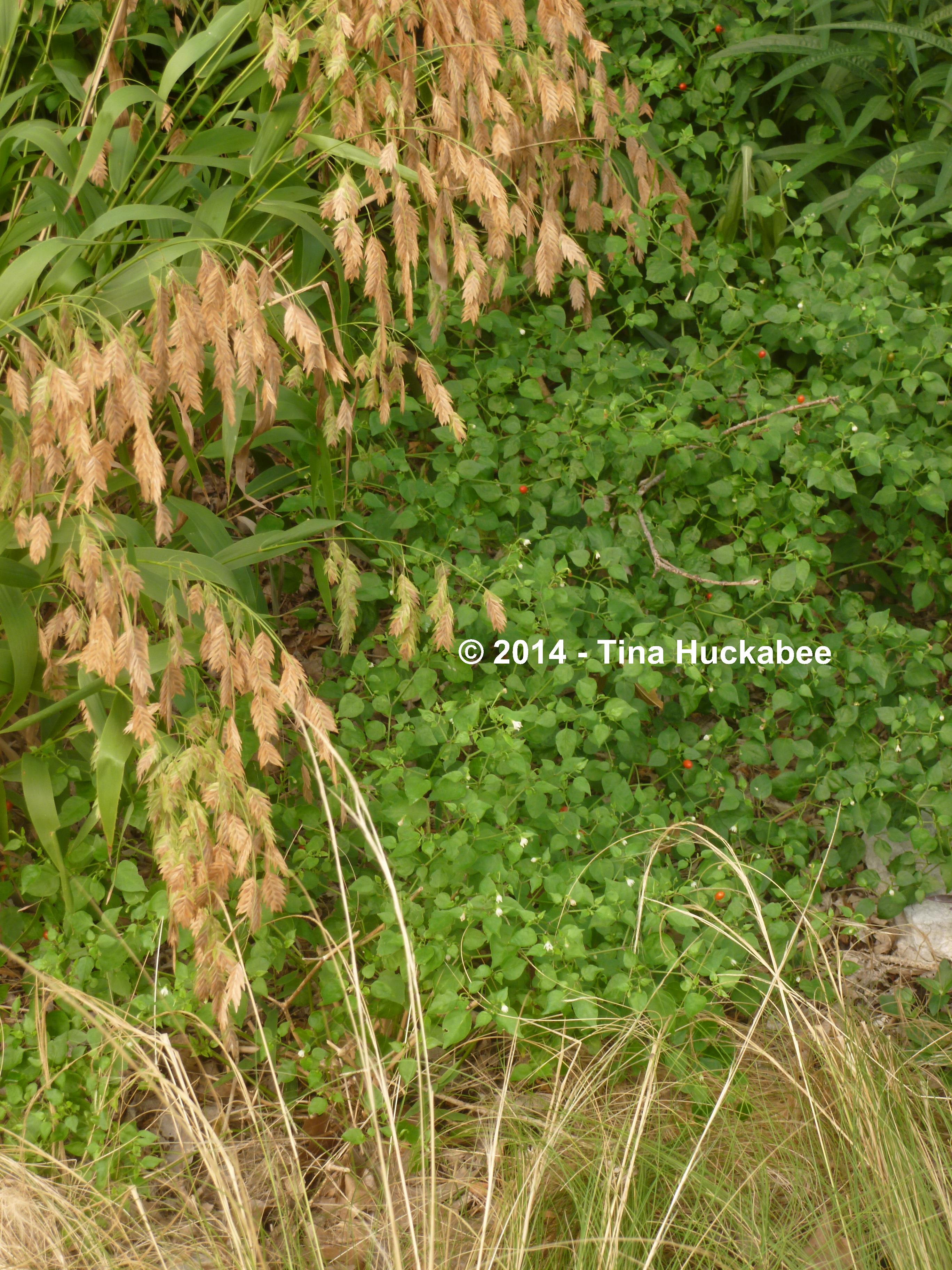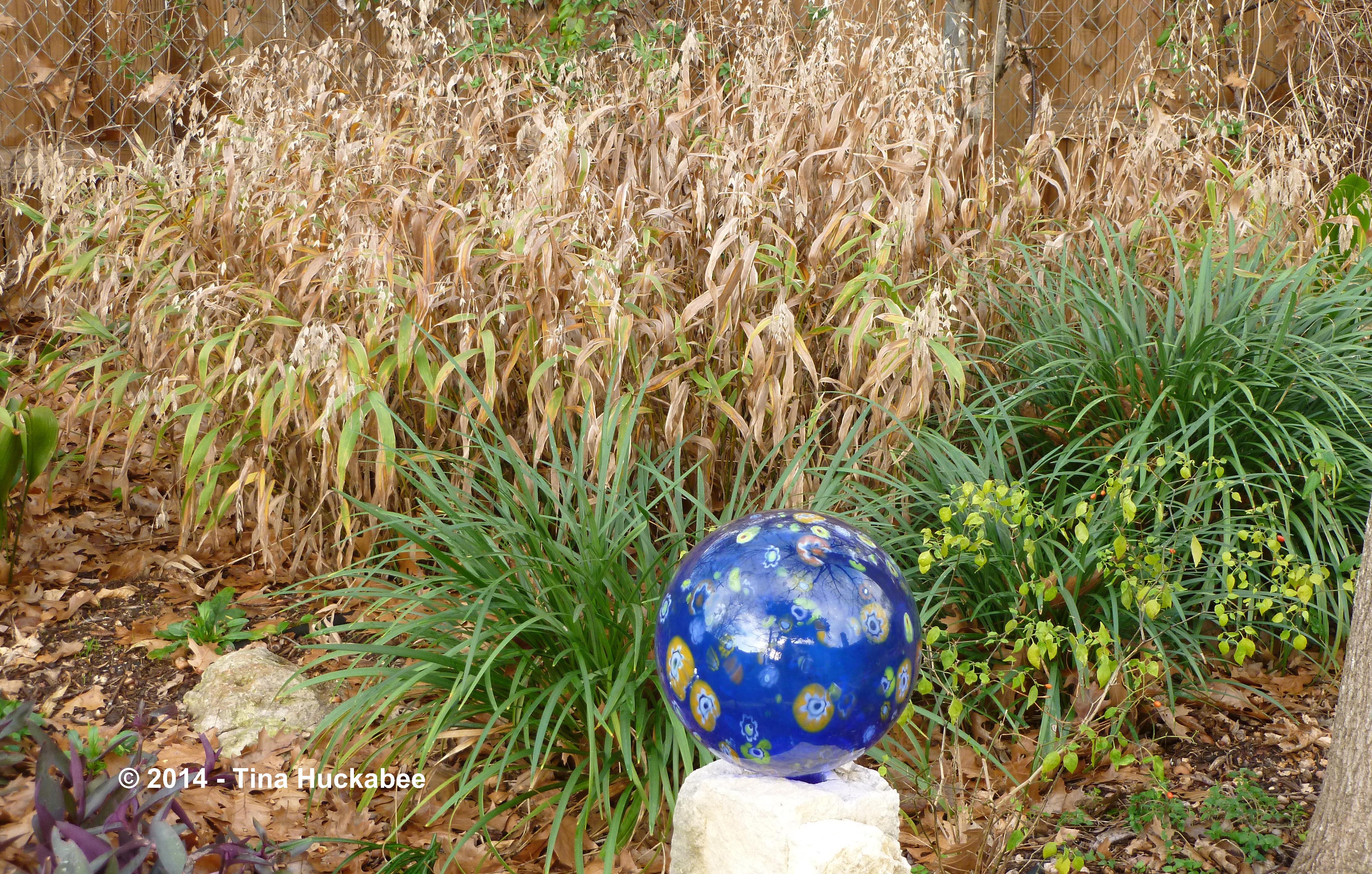I live in a region with nearly year-round gardening. Summer is hot–that’s a given–and winter is chilly, punctuated by hard freezes–sometimes rainy, sometimes dry. Spring and autumn are delightful, even when spring ends earlier than I’d like and autumn arrives way after it’s due. These pleasant months are the best times to be outdoors and in the garden; I’d suspect that many Texas native plants agree.
Perennials in the Asteraceae family are common, but well-worth having. These cheerful Fall aster, Symphyotrichum oblongifolium, bloom for 2-3 weeks and I always look forward to their lavender display.

I like Fall aster even when it doesn’t bloom, but how can you not grin when you see these charmers?
This combination of blooming perennials and shrubs provides interest for the gardener and food and cover for birds and insects. The background shrub is Barbados cherry, Malpighia glabra. Its subtle pink blooms are barely visible in the photo, outshined by its more colorful companion blooms. White blooms atop the leggy stalks of Frostweed, Verbesina virginica and the red hibiscus-like flowers of Turk’s cap, Malvaviscus arboreous are worthy competitors for attention to the lemony-yellow daisies of Plateau goldeneye, Viguiera dentata.

More Goldeneye to brighten your day.


It’s not just flowers that add to autumn’s beauty, but native grasses are at their peak during this time. My garden is a shady one and I only have a few spots of truly full sun and therefore, limited room for the stunning native grasses that grow well here in Central Texas. Native grasses need the blast of the Texas sun to shine! But this Big muhly, Muhlenbergia lindheimeri, sits in one of those sunny places. It’s a gorgeous plant–even in winter–but in autumn, its fluffy panicles sway gracefully in the breezes.

Be still my beating heart, I love this plant. I’m now growing several in my front garden (the back is too shady to host these sun lovers). This is the oldest of the bunch and I think by next year, the youngsters will be just as impressive.
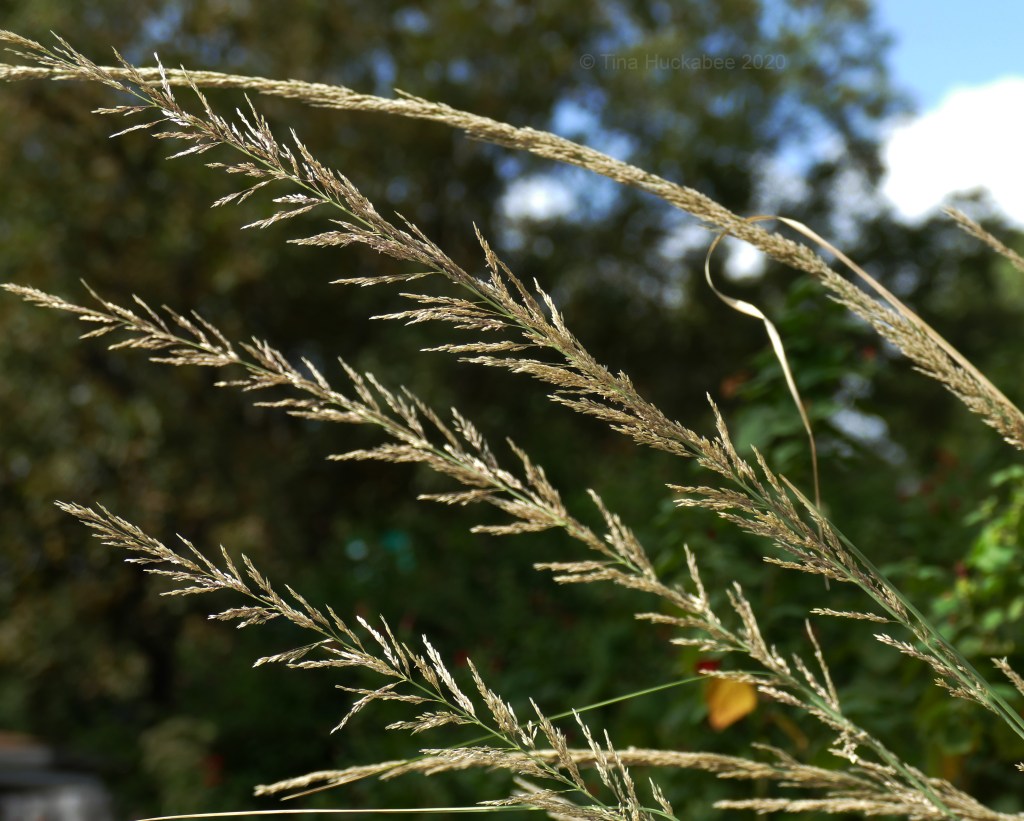
Another Goldeneye/Frostweed vignette benefits from the addition of Inland sea oats, Chasmanthium latifolium.

Inland sea oats are excellent grassy perennials for shade. The “oats” are chartreuse in spring, deepening their green during summer, turning tan in autumn. I think that the group in the above photo turns toasty earlier because it receives more sun. This group below, growing in my back garden and in significantly more shade, still retains some of its green highlights; eventually, they’ll all turn to a warm tawny until pruning, just before spring.

Texas craglily, Echeandia texensis, is a less common garden perennial than the others I’ve profiled, though available in some local nurseries. I purchased mine from Barton Springs Nursey years ago and mine have spread somewhat by seed, but I’ve also separated the fleshy roots into new individual plants.
The lovely flowers, alternately posed on tall bloom spikes, are small, orange-yellow and lily-like. Texas craglily is a member of the Liliaceae family.

The base of the plant is grassy, with fleshy foliage and despite its delicate appearance, a tough and drought-tolerant perennial. From its grassy base which appears in late spring and provides lush green throughout summer, the plant sends up bloom stalks in September, blooming until November. An elegant plant, the bloom stalks move with the wind, flowers and seed pods in almost constant motion.

This week marks Texas Native Plant Week, a celebration of the native plants of our regions. Texas is a big place with a wide range of topography and weather patterns, but there’s something for every garden, plants that will please every gardener. Native plants, Texan or otherwise, are must-haves for any garden. They’re easy to grow, they belong where they grow, and they nurture endemic wildlife. In the bigger picture, most regions enjoy a wide palette of gorgeous and valuable native plants: trees, shrubs, perennials and annuals, grasses and succulents. No matter where you garden and call home, if you haven’t tried growing natives, give it a whirl! You’ll be amazed at their beauty and ease.



